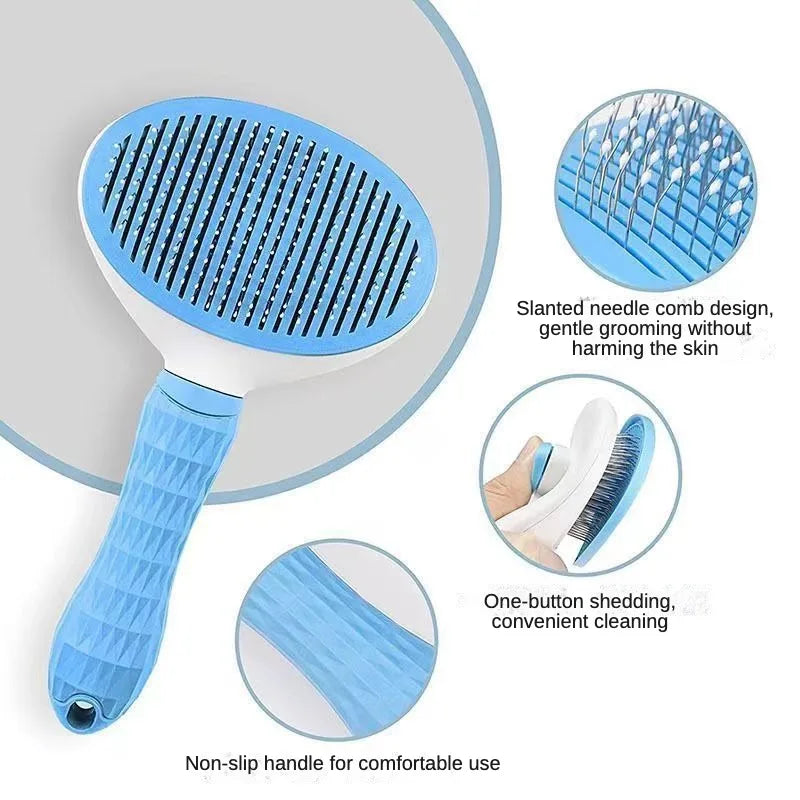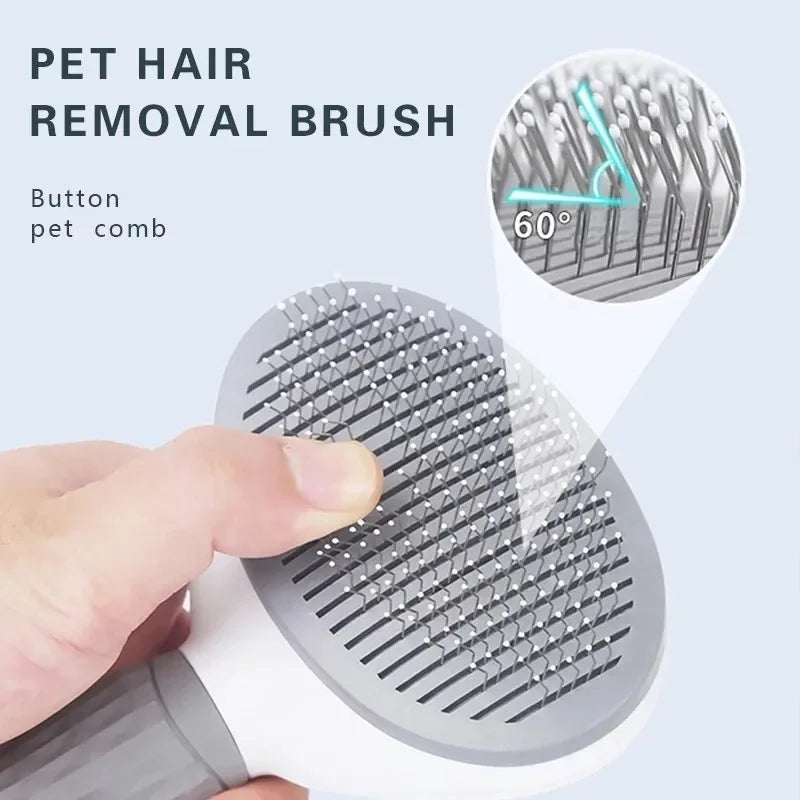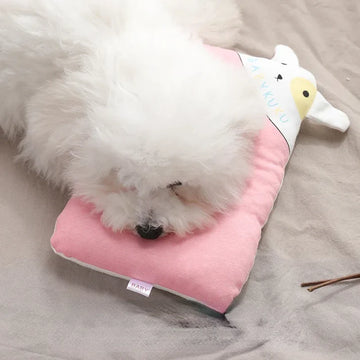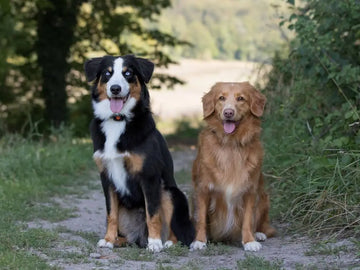Brushing your puppy’s hair is not just about keeping them looking adorable; it’s a vital part of their overall health and well-being. The frequency and techniques of brushing depend on your dog’s breed, coat type, and living conditions. In this guide, we’ll explore how often you should brush your puppy’s hair based on its coat type, offer step-by-step brushing instructions, and highlight the importance of choosing the right products like pet grooming supplies to make grooming a breeze.
Understanding Puppy Coat Types and Grooming Needs
Different coat types require different levels of care. Here are the most common puppy coat types and their unique grooming requirements:
Short-haired Puppies
Breeds like Beagles and Dachshunds have short, close-fitting coats that are relatively low-maintenance. Brushing them once or twice a week is sufficient to remove loose fur and maintain their shine.
Long-haired Puppies
Breeds such as Golden Retrievers or Maltese need daily brushing to prevent tangles and mats. Long coats tend to trap dirt and debris, making regular grooming essential for their comfort and health.
Curly-haired Puppies
Breeds like Poodles or Bichon Frises have tightly curled coats that require brushing every two to three days. This prevents matting and keeps their curls looking fluffy and healthy.
Double-coated Puppies
Breeds such as Huskies or Samoyeds have a dense undercoat beneath their topcoat. During shedding seasons (spring and fall), daily brushing is necessary to remove loose undercoat fur and reduce shedding. Outside of these times, brushing two to three times a week is enough.
Benefits of Brushing Your Puppy’s Hair
Brushing your puppy is more than just a grooming task; it provides several benefits:
-
Promotes Skin Health
Regular brushing stimulates blood circulation and helps distribute natural oils, leading to a shiny, healthy coat. It also prevents dirt and debris from accumulating on the skin.

-
Reduces Shedding
Especially for double-coated breeds, consistent brushing minimizes loose fur in your home, saving you from constant cleanup. Investing in high-quality Pet Grooming Supplies, such as a de-shedding tool or slicker brush, can make this task much easier. -
Strengthens Your Bond
Brushing your puppy is a bonding activity that fosters trust and strengthens your relationship. It’s a time to connect and show care. -
Detects Potential Issues Early
While brushing, you can check for signs of skin irritation, fleas, ticks, or unusual lumps, ensuring prompt action if needed.
How to Brush Your Puppy’s Hair: Step-by-Step Guide
Proper brushing ensures your puppy enjoys the process and benefits from it fully. Follow these steps:
-
Choose the Right Tools
The type of brush you use depends on your puppy’s coat. Short-haired breeds benefit from bristle brushes, while long-haired and curly-haired breeds require slicker brushes or combs designed to detangle. Choosing reliable Puppy Products, like durable brushes and grooming sprays, ensures effectiveness. -
Start Gently
Begin by petting your puppy to relax them. Then, brush in the direction of hair growth, starting from the head and moving down to the tail. -
Focus on Sensitive Areas
Pay attention to areas like behind the ears, under the legs, and around the tail, as these spots are prone to matting. Be gentle to avoid discomfort. -
Remove Tangles Carefully
For tough tangles, use a detangling spray or comb. Never pull on mats; instead, work them out slowly to prevent pain or stress.

-
Clean the Tools
After each brushing session, clean your tools to remove hair and dirt. This keeps them hygienic and ready for the next use.
Choosing the Best Pet Supplies for Grooming
To ensure efficient grooming, it’s crucial to select high-quality tools and products. Look for brands offering Best Pet Supplies, including sturdy brushes, grooming sprays, and combs designed for your puppy’s specific coat type.
Using a combination of appropriate brushes and natural grooming sprays can make the process easier while keeping your puppy’s coat clean and soft. Avoid products with harsh chemicals, as they can irritate your puppy’s sensitive skin.
Adjusting Grooming Frequency for Seasons
Seasonal changes play a role in determining how often you should groom your puppy:
- Shedding Seasons (Spring and Fall): Daily brushing is essential during these periods to control loose hair.
- Winter Months: Reduce brushing frequency slightly to maintain the natural oils that protect your puppy’s coat.
- Summer Months: Regular brushing ensures the coat is well-ventilated, helping prevent overheating.
Common Grooming Mistakes to Avoid
Even the most well-meaning pet owners can make mistakes during grooming. Here’s what to watch out for:
-
Over-brushing
Too much brushing can damage the coat and irritate the skin, especially in short-haired breeds. Stick to the recommended frequency for your puppy’s coat type. -
Neglecting Hidden Areas
Spots like the underarms, behind the ears, and between toes are often overlooked but need attention to prevent matting and irritation. -
Using the Wrong Tools
A brush that’s not suitable for your puppy’s coat type can cause more harm than good. Always choose tools specifically designed for your dog’s breed. -
Rushing the Process
Brushing should be a calm and enjoyable experience. Take your time and ensure your puppy is relaxed throughout.
Conclusion: Healthy Puppies, Happy Owners
Regular brushing is a cornerstone of puppy care, promoting not just a tidy appearance but also healthier skin and a shinier coat. The frequency and method of brushing depend on your puppy’s coat type, but with the right tools and techniques, it’s a task that both you and your furry friend can enjoy.
Invest in high-quality Puppy products and reliable pet grooming supplies to make the process seamless. For the best results, choose products from trusted Best Pet Supplies brands, ensuring your puppy gets the gentle care it deserves.
By incorporating proper grooming practices into your routine, you’re not just taking care of your puppy’s appearance—you’re ensuring their long-term comfort, health, and happiness. A well-groomed puppy is a happy puppy, and a happy puppy makes for a happy owner!








